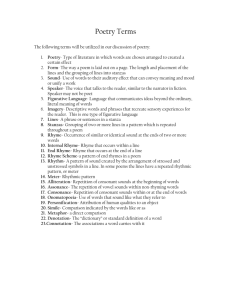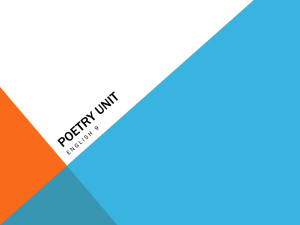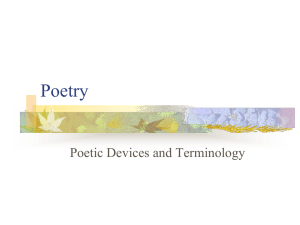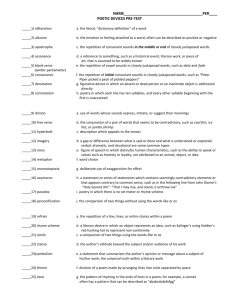Poetry
advertisement
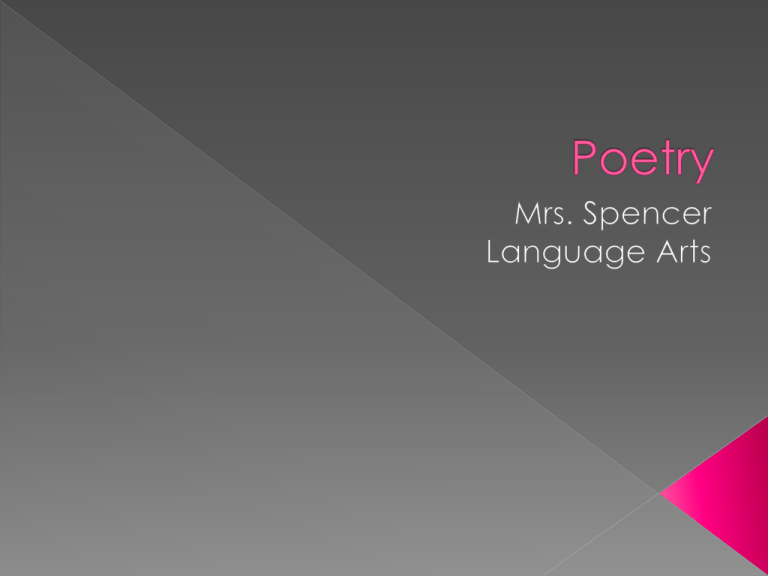
Poetry is the most musical of literary forms Speaker- character who tells the poem Imagery- writing that appeals to one or more of the five senses Metaphors- describe one thing as if it were something else. › Her eyes were saucers, wide with expectations. Personification- gives human qualities to something nonhuman. › The clarinet sang. Similes- use like or as to compare two unlike things. › The icy water was like stinging bees. Alliteration- repetition of consonant sounds at the beginning of words. › Feathered friends Repetition- repeated use of a sound, word, or phrase. Assonance- repetition of vowel sounds in stressed syllable that end with different consonant sounds. › Fade and hay Consonance- repetition of final consonant sounds in stressed syllables with different vowel sounds. › End and hand Onomatopoeia- use of words that imitate sound. › Pow! Rhyme- repetition of sounds at the end of a word. › Thin skin Rhythm- pattern of strong/weak beats and pauses. Lines- help poets add natural pauses by breaking up a poem into many parts. A capital letter is at the beginning of a line. Stanza- arrangement of groups of lines to create an appearance on the page or to organize thoughts. There is a blank line between stanzas. Meter- rhythmical pattern (the arrangement and number of stressed and unstressed syllables). Rhyme scheme- pattern of rhyme in a poem. It is written in letters; aabb is a stanza whose first 2 and last 2 lines rhyme. › End rhyme- occurs when the end of lines share the same sound. › Internal rhyme- a rhyme occurs within a single line. › Rhyming couplets- a pair of rhyming lines that usually have the same meter and length. Lyric/ballad- a songlike narrative poem, usually featuring rhyme, rhythm, and refrain Sonnets-14 line poems with a formal tone that follow a specific rhyme scheme and stanzas (Pertrarchan abbaabbacdecde with 2 stanzas or Shakespearean – ababcdcdefefgg with 4 stanzas) Odes- formal tone, written for the single purpose of celebrating something Elegies- formal poems that reflect on death or serious themes Narrative- tells a story. Has elements of short stories like setting, plot, and characters. Epics- a long narrative poem that tells an exciting or inspiring story about a hero and muse. Free verse-no strict structure. No regular meter, rhyme, line length, or stanza. Limerick- humorous 5 line poem with a specific rhythmic pattern and an aabba rhyme scheme. Concrete- the words are arranged on the page to form a shape that suggests the topic of the poem. It is lighthearted with a loose structure. Haiku- a 17 syllable poem (the first line has 5 syllables, the second has 7, and the third has 5). It is delicate, unrhymed, about nature, and Japanese.
